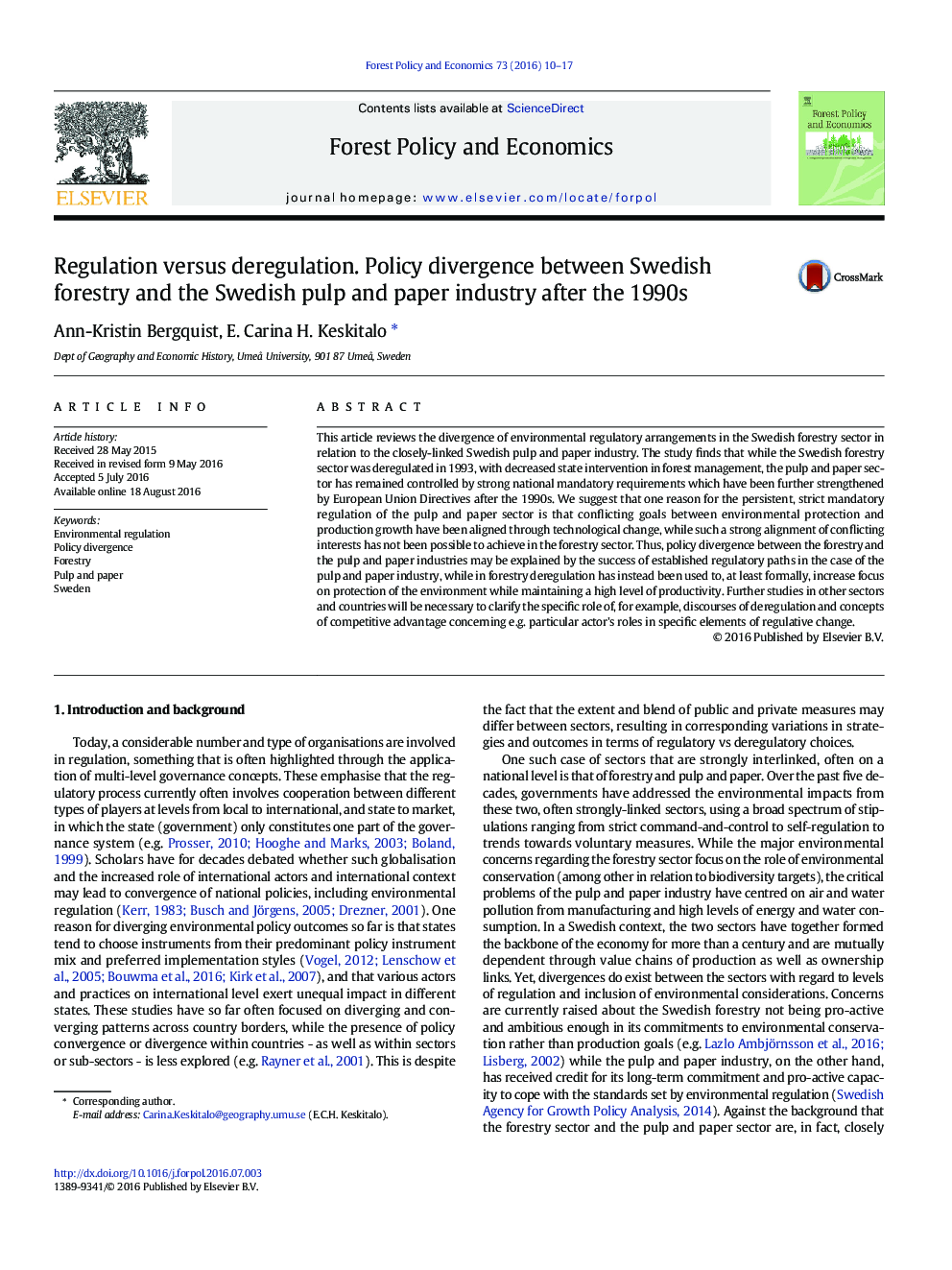| Article ID | Journal | Published Year | Pages | File Type |
|---|---|---|---|---|
| 6459807 | Forest Policy and Economics | 2016 | 8 Pages |
â¢Describes and problematizes the divergence of environmental regulatory arrangements in the closely-linked Swedish forestry and pulp-paper industry.â¢Discusses the role of established regulatory pathsâ¢Asks how we got here: calls for more research on discourses of deregulation and the roles of particular actors within regulative change.
This article reviews the divergence of environmental regulatory arrangements in the Swedish forestry sector in relation to the closely-linked Swedish pulp and paper industry. The study finds that while the Swedish forestry sector was deregulated in 1993, with decreased state intervention in forest management, the pulp and paper sector has remained controlled by strong national mandatory requirements which have been further strengthened by European Union Directives after the 1990s. We suggest that one reason for the persistent, strict mandatory regulation of the pulp and paper sector is that conflicting goals between environmental protection and production growth have been aligned through technological change, while such a strong alignment of conflicting interests has not been possible to achieve in the forestry sector. Thus, policy divergence between the forestry and the pulp and paper industries may be explained by the success of established regulatory paths in the case of the pulp and paper industry, while in forestry deregulation has instead been used to, at least formally, increase focus on protection of the environment while maintaining a high level of productivity. Further studies in other sectors and countries will be necessary to clarify the specific role of, for example, discourses of deregulation and concepts of competitive advantage concerning e.g. particular actor's roles in specific elements of regulative change.
